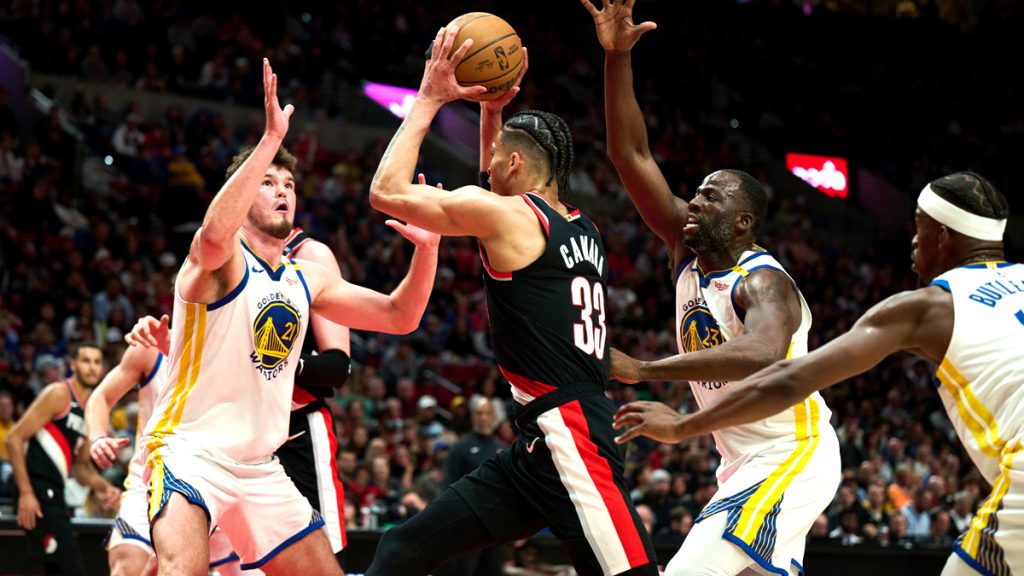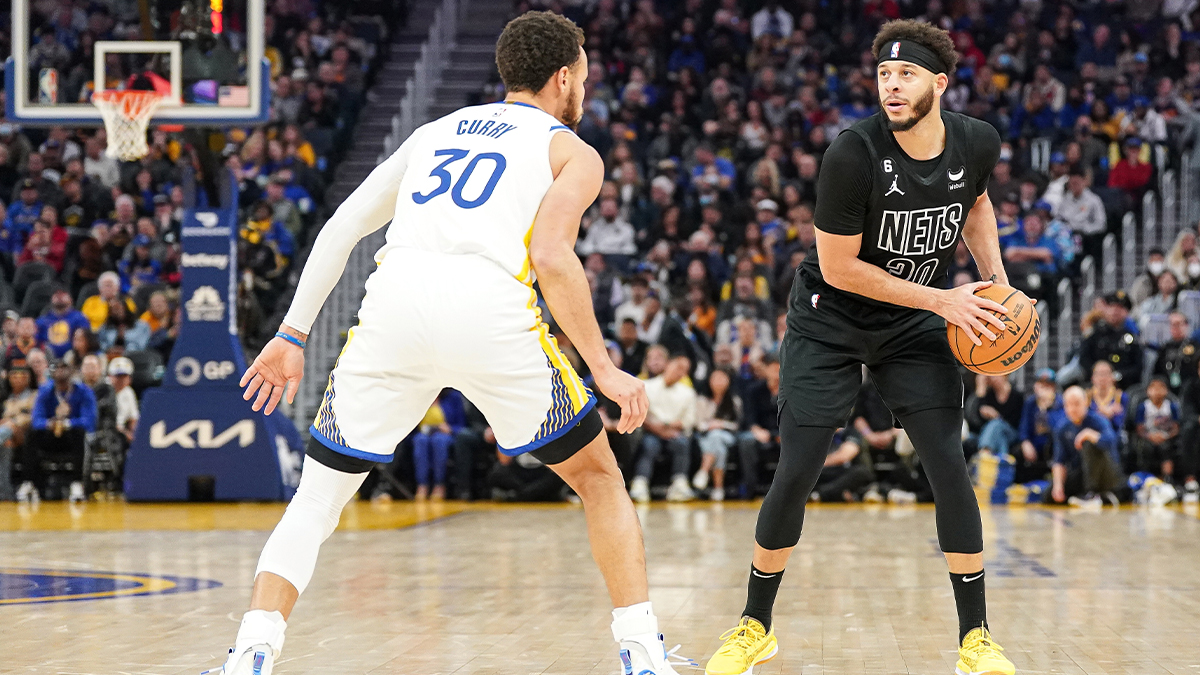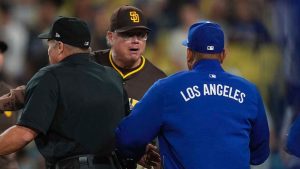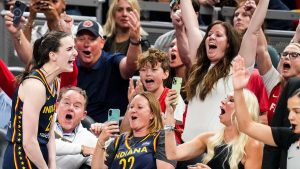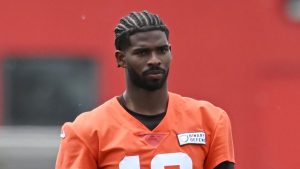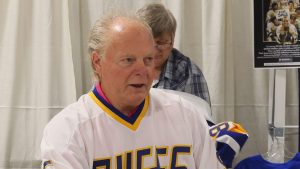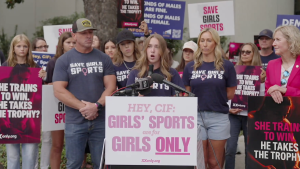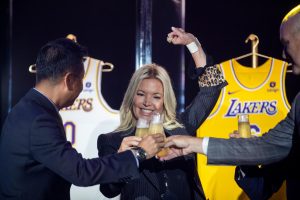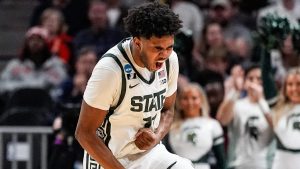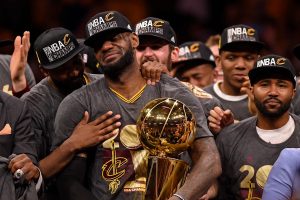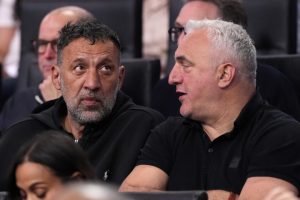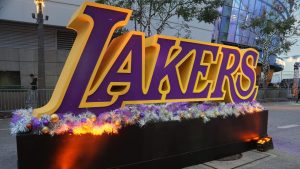Warriors must de-emphasize small ball, prioritize adding center this offseason originally appeared on NBC Sports Bay Area
Among the lessons the Warriors learned during the 2025 NBA playoffs, which was amplified after their ouster, is that they no longer can compete among the league’s elite with their relatively miniature paint presence.
Translated, impactful size in the NBA matters more than it did 10 years ago when the Warriors would go small and torture opponents. That strategy was effective for a variety of reasons, paramount being 6-foot-6 Draymond Green’s unique ability to slide over to center and play marvelous defense while running opposing big men off the floor.
Now that it is evident Green’s body, at age 35, has lost some of that ability, the Warriors must adjust. The encouraging factor, if you’re a fan, is that they concede it.
“I’d prefer not to have to play Draymond at center for 82 games,” general manager Mike Dunleavy said two days after Golden State was eliminated by the Minnesota Timberwolves in the Western Conference semifinals.
“I don’t want to start next season with Draymond as our starting 5,” coach Steve Kerr said. “It’s doable for the last 30 games, like we did this year. But you see the toll it takes on him. He’s talked about it too.”
It’s not that Kerr should completely abandon his pet lineups; there will be instances when they’re useful. But those instances are rapidly diminishing.
The Western Conference is overrun with imposing big men: Isaiah Hartenstein and Chet Holmgren in Oklahoma City, Alperen Şengün in Houston, Rudy Gobert and Julius Randle in Minnesota. There are Anthony Davis, Daniel Gafford and Dereck Lively II in Dallas, Victor Wembanyama in San Antonio, Jaren Jackson Jr. and Zach Edey in Memphis and Ivica Zubac with the Clippers. And, at the top of this mountain range is three-time MVP Nikola Jokić in Denver.
Those 12 players – eight of whom are under age 30 – compose a smorgasbord of skill, length and athleticism. They all bring something to the paint. Jokić is transcendent, and Wembanyama is pointed toward that direction.
The Warriors’ counters, in addition to Green, are 6-foot-9 Trayce Jackson-Davis and 7-foot Quinten Post. Jackson-Davis provides some rim protection on one end but struggles to finish in traffic on the other. Post’s best attribute is perimeter shooting. They are valuable role players. They are not, at this stage of their careers, difference-makers on a contender.
(If there were a way to combine the best of Jackson-Davis with the best of Post, the Warriors wouldn’t be in this fix.)
“It’s important if those guys of positional size are good basketball players,” Kerr said. “You can’t just add size for size’s sake, and the pieces need to fit together.”
Given the ages of Stephen Curry (37), Jimmy Butler (turns 36 before training camp) and Green, logic dictates next season as Golden State’s last, best chance to chase a championship. It’s a longshot – they would represent the oldest core trio to win the NBA Finals – but Curry’s longevity makes it worth a shot.
The Warriors own a second-round pick (41st overall) in next week’s NBA draft, but league sources tell NBC Sports Bay Area they’re showing interest in veterans that might be available – and that future draft picks are in play. Golden State owns each of its first-round picks from 2026 through 2029.
In doubt that Curry, Butler or Green would be willing to sacrifice some of that in a deal that delivered a plug-and-play big man?
“The biggest things are you’ve got to look at both sides of the ball,” Dunleavy said. “How does a player of that position complement the guys we have? That’s specifically in the frontcourt (with) Jimmy and Draymond.”
Another option on the table is the future of Jonathan Kuminga. The Warriors will tender him an $7.98 million qualifying offer sometime by June 29, making him a restricted free agent. The 6-foot-7 forward still is an attractive trade asset, and it has become apparent the Warriors are willing to listen.
Myriad possibilities are centered around Kuminga, with a sign-and-trade option being complex but doable. Dunleavy, in his brief history as GM, has shown no fear of complexity.
What’s clear is that the Warriors must make strides to join the new NBA. They need shooting, always have.
They need 3-and-D wings, always have. They need productive size, someone who can bang and bump with the best of the West. That’s a new priority. We’ll submit five candidates in our next post.
Download and follow the Dubs Talk Podcast
Warriors must de-emphasize small ball, prioritize adding center this offseason
Among the lessons the Warriors learned during the 2025 NBA playoffs, which was amplified after their ouster, is that they no longer can compete among the league’s elite with their relatively miniature paint presence.
Translated, impactful size in the NBA matters more than it did 10 years ago when the Warriors would go small and torture opponents. That strategy was effective for a variety of reasons, paramount being 6-foot-6 Draymond Green’s unique ability to slide over to center and play marvelous defense while running opposing big men off the floor.
Now that it is evident Green’s body, at age 35, has lost some of that ability, the Warriors must adjust. The encouraging factor, if you’re a fan, is that they concede it.
“I’d prefer not to have to play Draymond at center for 82 games,” general manager Mike Dunleavy said two days after Golden State was eliminated by the Minnesota Timberwolves in the Western Conference semifinals.
“I don’t want to start next season with Draymond as our starting 5,” coach Steve Kerr said. “It’s doable for the last 30 games, like we did this year. But you see the toll it takes on him. He’s talked about it too.”
It’s not that Kerr should completely abandon his pet lineups; there will be instances when they’re useful. But those instances are rapidly diminishing.
The Western Conference is overrun with imposing big men: Isaiah Hartenstein and Chet Holmgren in Oklahoma City, Alperen Şengün in Houston, Rudy Gobert and Julius Randle in Minnesota. There are Anthony Davis, Daniel Gafford and Dereck Lively II in Dallas, Victor Wembanyama in San Antonio, Jaren Jackson Jr. and Zach Edey in Memphis and Ivica Zubac with the Clippers. And, at the top of this mountain range is three-time MVP Nikola Jokić in Denver.
Golden State Warriors
Find the latest Golden State Warriors news, highlights, analysis and more with NBC Sports Bay Area and California.
Those 12 players – eight of whom are under age 30 – compose a smorgasbord of skill, length and athleticism. They all bring something to the paint. Jokić is transcendent, and Wembanyama is pointed toward that direction.
The Warriors’ counters, in addition to Green, are 6-foot-9 Trayce Jackson-Davis and 7-foot Quinten Post. Jackson-Davis provides some rim protection on one end but struggles to finish in traffic on the other. Post’s best attribute is perimeter shooting. They are valuable role players. They are not, at this stage of their careers, difference-makers on a contender.
(If there were a way to combine the best of Jackson-Davis with the best of Post, the Warriors wouldn’t be in this fix.)
“It’s important if those guys of positional size are good basketball players,” Kerr said. “You can’t just add size for size’s sake, and the pieces need to fit together.”
Given the ages of Stephen Curry (37), Jimmy Butler (turns 36 before training camp) and Green, logic dictates next season as Golden State’s last, best chance to chase a championship. It’s a longshot – they would represent the oldest core trio to win the NBA Finals – but Curry’s longevity makes it worth a shot.
The Warriors own a second-round pick (41st overall) in next week’s NBA draft, but league sources tell NBC Sports Bay Area they’re showing interest in veterans that might be available – and that future draft picks are in play. Golden State owns each of its first-round picks from 2026 through 2029.
In doubt that Curry, Butler or Green would be willing to sacrifice some of that in a deal that delivered a plug-and-play big man?
“The biggest things are you’ve got to look at both sides of the ball,” Dunleavy said. “How does a player of that position complement the guys we have? That’s specifically in the frontcourt (with) Jimmy and Draymond.”
Another option on the table is the future of Jonathan Kuminga. The Warriors will tender him an $7.98 million qualifying offer sometime by June 29, making him a restricted free agent. The 6-foot-7 forward still is an attractive trade asset, and it has become apparent the Warriors are willing to listen.
Myriad possibilities are centered around Kuminga, with a sign-and-trade option being complex but doable. Dunleavy, in his brief history as GM, has shown no fear of complexity.
What’s clear is that the Warriors must make strides to join the new NBA. They need shooting, always have.
They need 3-and-D wings, always have. They need productive size, someone who can bang and bump with the best of the West. That’s a new priority. We’ll submit five candidates in our next post.
Download and follow the Dubs Talk Podcast
This article tagged under:
NBA Free AgencyDraymond GreenMike DunleavyWarriors Offseason

